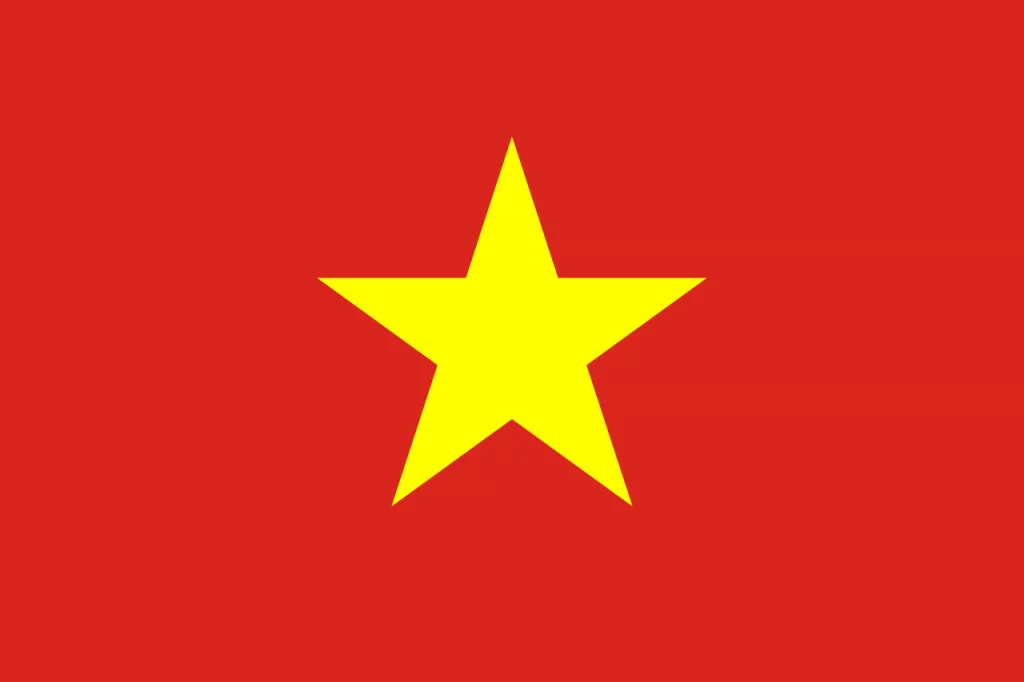Vietnam, officially known as the Socialist Republic of Vietnam, is situated on the easternmost tip of the Indochinese peninsula in Southeast Asia. It shares borders with Laos, Cambodia, China, the East Sea, and the Gulf of Thailand.
The history of Vietnam dates back to the Paleolithic age when it was inhabited by various states such as Van Lang and Au Lac. During the 2nd century BC, Au Lac was incorporated into the Trieu Dynasty in the North, marking the beginning of a millennium-long period of Northern domination.
See more: Quang Te Temple Tour – Discover the Serenity of Long Xuyen City
Some idea in the article:
- Introduce Vietnam to foreigners
- Overview of Vietnam
- What are the reasons that make Vietnam a tourist attraction for foreigners
- Describe Vietnam IELTS
- Introduce Vietnam in English
- Attitudes in Vietnamese culture
- Vietnam is a country, exports a lot of rice
- Socialist Republic of Vietnam is a country with a great patriotism through its history
- socialist republic of vietnam independence – freedom – happiness
- The Socialist Republic of Vietnam has stood out as one such example of how to effectively
- Socialist Republic of Vietnam is a country with a great patriotism through its history.
- Independence Freedom Happiness
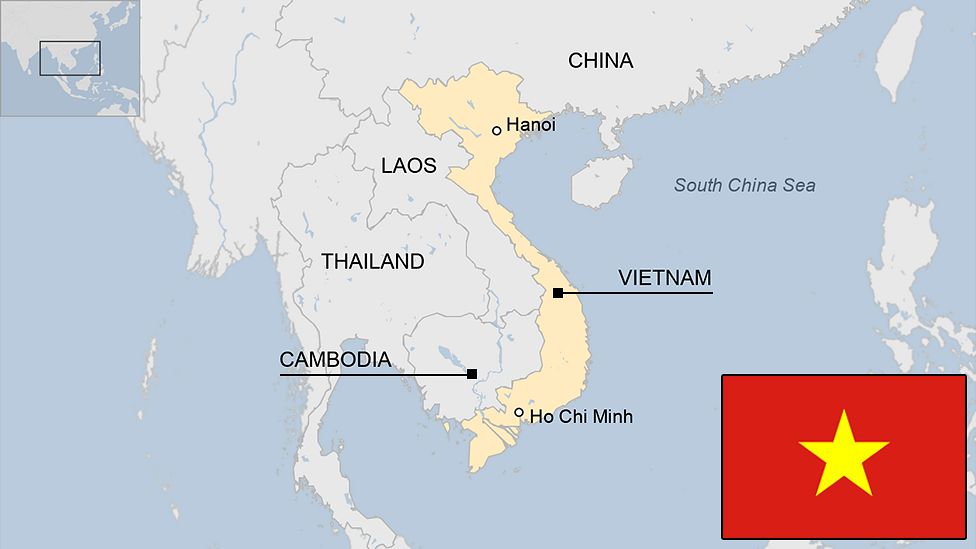
After the Southern Han Dynasty, the independent monarchy was restored following Ngo Quyen’s triumph. This victory paved the way for subsequent independent dynasties to rise and successfully defend against northern invasions while gradually expanding their influence southwards.
The Northern Domination era ultimately came to an end when Lam Son’s insurgents emerged victorious against the Ming Dynasty. In more recent times, Vietnam experienced periods of colonization by the French and the Japanese.
After Japan’s surrender in World War II, the Allies facilitated the French withdrawal from the Indochinese Federation. However, Vietnam faced interventions from Allied nations like Britain, France (in the South), and the Republic of China (in the North), under the pretext of disarming the Japanese army.
The Democratic Republic of Vietnam, led by the Viet Minh Front, was established on September 2, 1945, following Ho Chi Minh’s declaration of independence. This came after the successful August Revolution and victories against both the French Union and the Vietnamese Nationalist forces supported by France during the First Indochina War.
These events led to the signing of the Geneva Agreement in 1954, resulting in the division of Vietnam into two military zones along the 17th parallel.
The Democratic Republic of Vietnam governed the northern part, while the Republic of Vietnam (the successor state of the Vietnamese Nation) controlled the southern part with support from the United States.The conflict over territorial reunification escalated into the Vietnam War, involving the intervention of multiple countries.
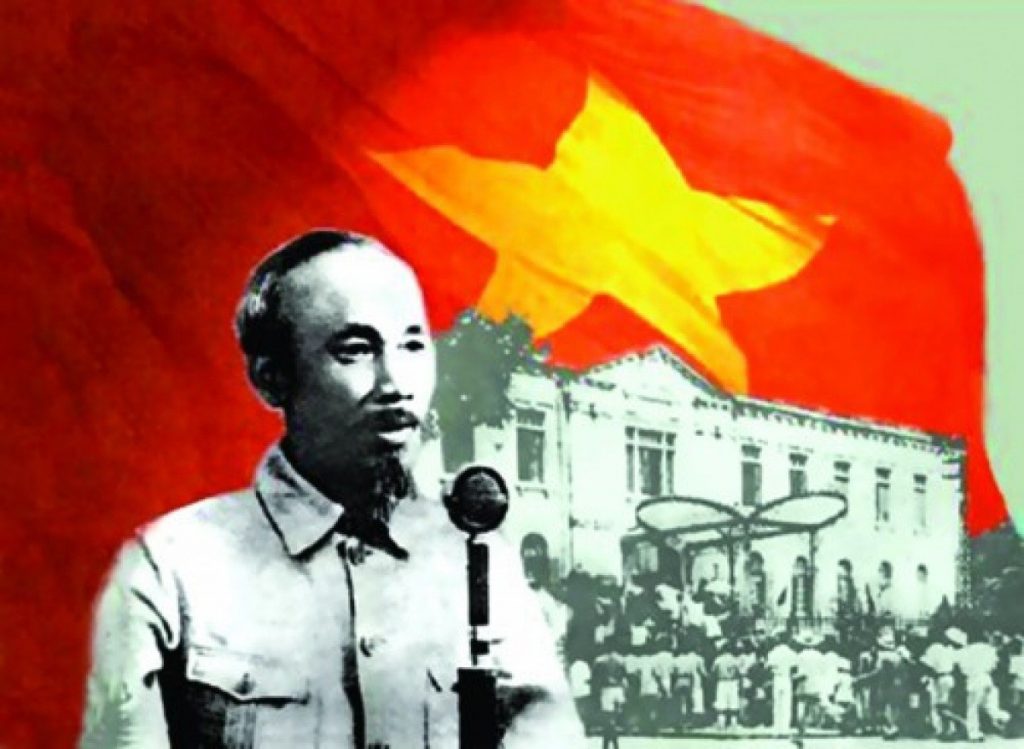
Ultimately, the Democratic Republic of Vietnam, the National Front for the Liberation of South Vietnam, and the collapse of the South Vietnamese Army led to the fall of the Republic of Vietnam in 1975.
The southern part of Vietnam came under the control of the government of the Republic of South Vietnam, established by the National Front for the Liberation of South Vietnam.
In 1976, the Democratic Republic of Vietnam and the Republic of South Vietnam merged to form the Socialist Republic of Vietnam. Following reunification, Vietnam faced challenges stemming from the collapse of the Soviet Union and the Eastern Bloc, US embargoes, the third Indochina War, and the repercussions of long-standing subsidy policies.
In 1986, the Communist Party introduced doi moi reforms, which paved the way for the establishment of a market economy and extensive integration.
Combining the doi moi reforms with its sizable population, Vietnam has emerged as one of the world’s fastest-growing developing countries, often referred to as the New Asian Tiger.
However, it still grapples with issues such as corruption, rising crime rates, environmental pollution, and inadequate social welfare. Furthermore, Vietnam’s human rights record, particularly concerning religious matters, media censorship, restrictions on activities supporting human rights, and civil liberties, has drawn criticism from dissidents, several Western governments, and human rights organizations.
The origin of the Vietnam name Update 07/14/2025
Throughout Vietnam’s history, various states have been associated with different national titles such as Xich Gui, Van Lang, Dai Viet, Dai Nam, and Vietnam.
The Vietnamese character (越南) is believed to be a reversal of the ancient national name Nanyue (南越) dating back to BC. The term “Viet” in the beginning refers to the land of Viet Thuong, the former territory of the country, which was used in national titles like Dai Co Viet (大瞿越) and Dai Viet (大越) between the 10th and early 19th centuries.
The word “Nam” 南 at the end indicates that this is the southern land, denoting the border region. It was previously used in the national name Dai Nam (大南) and served as a means to distinguish Dai Viet as Nam Quoc (as in “Nam Quoc Son Ha”) from the Northern Kingdom, China.
In 1804, King Gia Long of the Nguyen Dynasty officially adopted the national title “Vietnam”. The Qing Dynasty later recognized Vietnam as the national title of the Nguyen Dynasty. The name “Vietnam” should not be confused with Nam Viet and represents the geographical location south of Bach Viet. Interestingly, several hundred years ago, during the Thunderstorm Trinh Trinh period, Nguyen Binh Khiem used the name “Vietnam” as the official name, although the national name “Dai Viet” was still in use at that time.
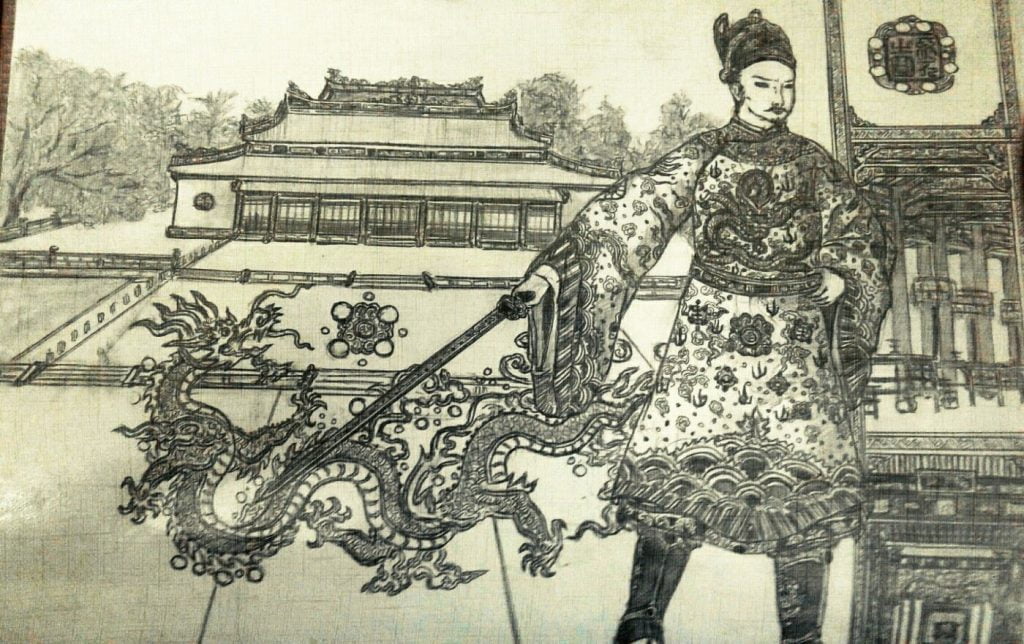
In 1804, King Thanh ordered the assassination of the Guangxi envoy Te Bo Sam to proclaim Gia Long as “the king of Vietnam,” even though the Nguyen kings continued the old tradition of declaring themselves “Emperor” to maintain equality with the Chinese kings.
The name “Vietnam” also appeared in Phan Boi Chau’s work “Vietnam’s Death in History” in 1905 and in the name of the Vietnam Nationalist Party. The name “An Nam” also existed during the French colonial period. In 1945, the Vietnamese Empire was established, and the national title “Vietnam” continued to be used. Since then, all states in Vietnam have adopted this national title.
In writing in a foreign language Update 07/14/2025
In contemporary written English, the most widely used and accepted spelling for the name of the country is Vietnam, written without spaces, which gives rise to the adjective Vietnamese. However, within Vietnam, there are still two ways of writing the name that retain spaces: “Viet Nam” (without diacritics) and “Vietnam” (with diacritics following the Quoc Ngu script). This can be observed on the websites of the Government of Vietnam and the Ministry of Foreign Affairs of Vietnam, which previously utilized all three variations: “Vietnam,” “Viet Nam,” or “Vietnam.”
On the United Nations website, the country’s name is written as “Viet Nam” in the member list, while subsections still employ “Vietnam.” Presently, the Ministry of Foreign Affairs of Vietnam and the International Organization for Standardization (ISO) recognize “Viet Nam” and the national title “the Socialist Republic of Viet Nam” as the correct and standardized names for Vietnam in foreign languages, particularly in English documents and cultural materials published by the Vietnamese government.
Although, in the past, as mentioned earlier, the matter of a unified name for Vietnam was not strictly adhered to, the official website of the Government of Vietnam now predominantly employs the standardized name “Viet Nam,” minimizing the use of other variations like “Vietnam.”
However, the Oxford English Dictionary only lists Vietnamese as the spelling for nouns and Vietnamese as the spelling for adjectives, without recognizing “Viet Nam” and “Viet Namese.”
Most languages that use the Latin script, such as Spanish, German, Italian, and others, also adopt the spelling “Vietnam.” Some languages may have different variations, such as “Vietnã” in Portuguese, “Wietnam” in Polish, or “Vítneam” in Irish, depending on the structure of the Latin alphabet in each language. However, all these variations are written without spaces. Other languages employing writing systems closely related to Latin, such as Cyrillic or Greek, also write Vietnam without spaces, for example, “Вьетнам” in Russian, “Вијетнам” in Serbian, and “Βιετνάμ” in Greek.
Geography Update 07/14/2025
Vietnam encompasses an area of 331,212 square kilometers and shares land borders stretching 4,639 kilometers. Its coastline extends 3,260 kilometers, with maritime borders adjoining Thailand across the Gulf of Thailand, as well as China, the Philippines, Indonesia, and Brunei, and Malaysia across the South China Sea.
Vietnam asserts its sovereignty over two disputed geographical features in the East Sea, namely the Hoang Sa (under de facto control) and Truong Sa (partially controlled) archipelagos.

The distance between the northern and southern poles of Vietnam, measured as the crow flies, is approximately 1,650 kilometers.
The country’s narrowest width is found in Quang Binh, spanning less than 50 kilometers. Its land borders extend for over 4,600 kilometers, with the longest border shared with Laos (nearly 2,100 kilometers), followed by China and Cambodia.
The total land area encompasses 331,212 square kilometers, including the mainland and more than 4,000 islands, reefs, and the aforementioned archipelagos in the East Sea—the Truong Sa Islands (in Khanh Hoa province) and the Hoang Sa Islands (administered by Da Nang City), both of which Vietnam claims.
Vietnam’s topography is characterized by mountains and forests, covering approximately 40% of the country, while hills account for another 40%.
Rivers and lakes crisscross the northern delta, mountainous areas, and the Central Highlands. The delta regions, including the Red River Delta, the Mekong River Delta, and the central coastal plains, constitute densely populated areas and encompass about a quarter of the country’s area. Cultivated land makes up 17% of Vietnam’s total land area.
The predominant soil types are ferralit soil in mountainous areas (including basalt-formed soil in the Central Highlands) and alluvial soil in the coastal regions of the Red River Delta and the Mekong River Delta. Vietnam’s forests primarily consist of tropical jungles found in mountainous areas and lowland coastal regions, featuring mangroves.
The mainland boasts mineral deposits such as phosphate and gold, with coal reserves most abundant in Quang Ninh, and iron deposits in Thai Nguyen and Ha Tinh. The sea surrounding Vietnam is home to oil and natural gas fields.
Vietnam experiences a tropical monsoon climate characterized by volatile weather patterns. In the northern region, beyond the Bach Ma mountain range, there are two primary wind seasons: the cold and dry northeast monsoon in winter, which brings cold temperatures, and the hot and dry southwest wind in summer.
The southern region experiences northeasterly winds during the dry season and southwesterly winds during the rainy season. Ocean currents play a role in regulating the climate.
The average relative humidity remains around 84% throughout the year. Vietnam encounters floods and storms, with annual rainfall ranging from 1,200 to 3,000 millimeters, sunshine hours ranging from 1,500 to 3,000 hours per year, and temperatures spanning 5°C to 37°C. Over a span of 50 years (1964–2014), the average annual temperature has risen by approximately 0.5 degrees Celsius.
Ecological Update 07/14/2025
Vietnam is situated within the Indomalaya ecoregion, and it ranks 16th globally in terms of biodiversity, according to the 2005 National State of the Environment Report.
The country is recognized as one of the 25 nations with a high level of biodiversity, hosting approximately 16% of the world’s most diverse species.
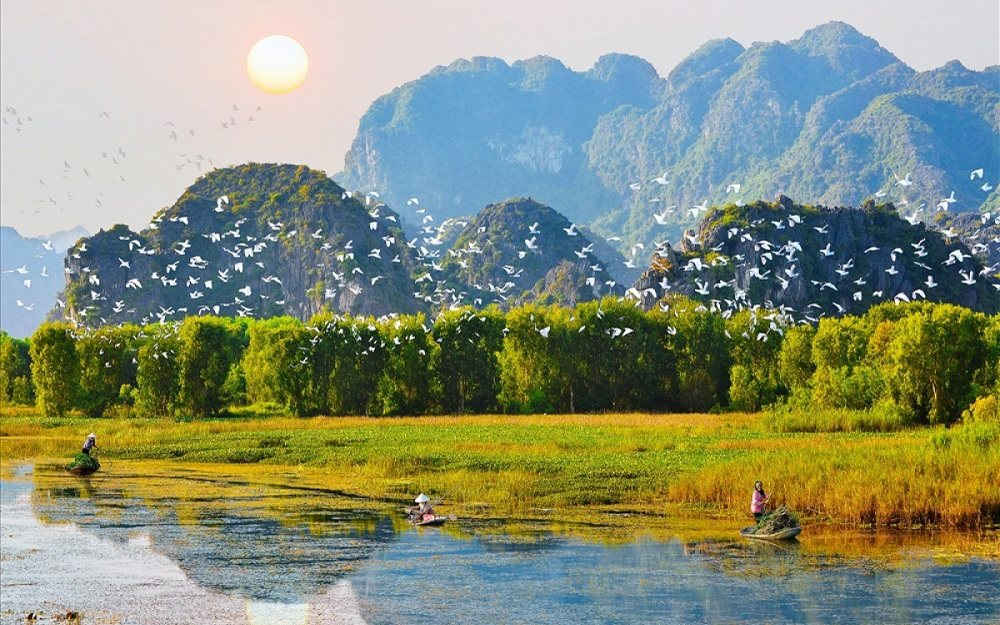
Vietnam is home to a remarkable array of flora and fauna, with a total of 15,986 plant species identified throughout the country. Among these, 10% are endemic species unique to Vietnam.
The rich biodiversity extends to various animal groups, including 307 species of roundworms, 200 species of oligochaeta (segmented worms), 145 species of acarinas (mites and ticks), 113 species of beetles, 7,750 species of insects, 260 reptile species, 120 amphibian species, 840 bird species, and 310 mammal species. Notably, 100 bird species and 78 mammal species are endemic to Vietnam.
Additionally, Vietnam is home to 1,438 freshwater algae species, accounting for 9.6% of all known algae species, as well as 794 aquatic invertebrate species and 2,458 marine fish species. In the late 1980s, a population of Javan Rhinos was discovered in Cat Tien National Park, but it is believed that the last individual of this species in Vietnam perished in 2010.
To safeguard this rich biodiversity, the Vietnam National Gene Bank has been established to preserve 12,300 varieties across 115 species. In 2004, the Vietnamese government allocated US$497 million to biodiversity conservation efforts.
As part of these initiatives, Vietnam has designated 126 protected areas, including 28 national parks. The country proudly boasts two UNESCO World Natural Heritage sites: Ha Long Bay and Phong Nha-Ke Bang National Park.
Additionally, Vietnam is home to six biosphere reserves, namely Can Gio, Cat Tien, Cat Ba, Kien Giang, and the River Delta mangroves, which contribute to the conservation and sustainable management of the natural environment.
Administration Update 07/14/2025
Vietnam’s administrative structure follows a decentralized system comprising three levels: provincial or equivalent level, district or equivalent level, and commune or equivalent level.
The capital city of Vietnam is Hanoi, while the most populous and economically significant city is Ho Chi Minh City, which is still commonly referred to by its former name, Saigon.
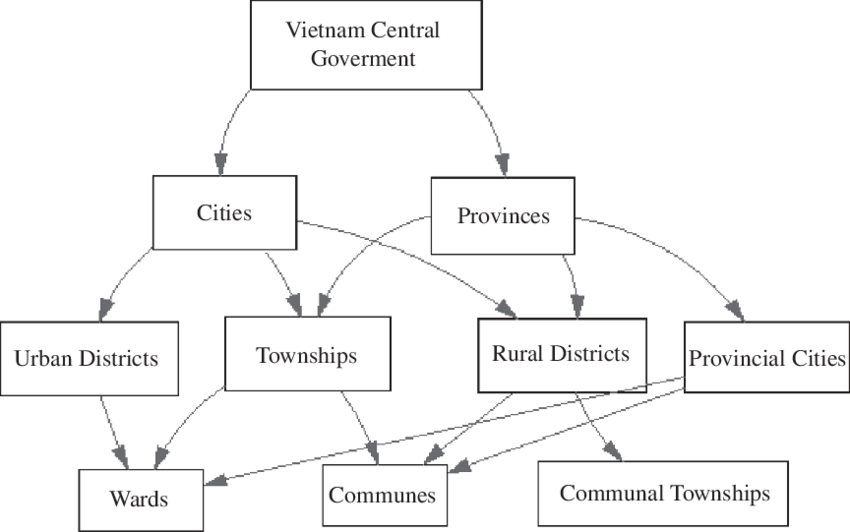
At the provincial and equivalent levels, there are a total of 63 administrative units, including 58 provinces and 5 centrally-run cities, with Hanoi serving as the capital.
Beneath the provincial and centrally-run city level, there exist districts, towns, and provincial cities collectively referred to as the district level. As of January 2021, Vietnam has 705 district-level units, encompassing districts, towns, and cities under provinces or cities governed by the central government.
Further down the administrative hierarchy, we find wards, communes, and townships, constituting the commune level.
At an even more local level, there are informal areas with various names such as quarters, neighborhood groups, villages, hamlets, and sub-hamlets, depending on the specific region and context.
History Update 07/14/2025
Archaeological discoveries have unveiled evidence of Paleolithic upright individuals inhabiting the land of Vietnam approximately 500,000 years ago. Remnants of primitive stone tools and teeth imprints from prehistoric people have been found in provinces such as Lang Son, Thanh Hoa, Yen Bai, Ninh Binh, and Quang Binh. In the northern regions, people settled in limestone caves and relied on hunting and gathering for sustenance. Conversely, along the central coastal areas like Nghe An, fishing became the primary means of livelihood.
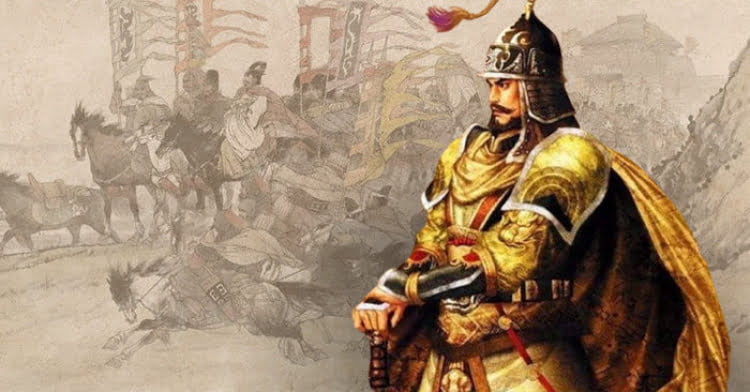
During the Neolithic era, which occurred 5,000 to 6,000 years ago, ancient Vietnamese communities began cultivating wet rice. Traces of rice cultivation emerged across plateaus and plains, marking the transition in their agricultural practices. Additionally, advancements in tool-making techniques and pottery craftsmanship became apparent during this period.
By the end of the Bronze Age, around the first millennium BC, the regions encompassing the Red and Ca rivers witnessed the development of the Dong Son culture, characterized by extensive wet rice cultivation. Simultaneously, various states emerged, including Van Lang and Au Lac, marking significant milestones in Vietnam’s early history.
Starting from the second century BC, various feudal dynasties from the northern region exerted control over parts of Vietnam for over a millennium.
However, these ruling periods experienced interruptions due to uprisings led by notable figures such as Ba Trieu, Mai Thuc Loan, Hai Ba Trung, and Ly Bi. In 905, Khuc Thua Du achieved autonomy, although not full independence, as Du identified himself as a mandarin of the Northern court.
The year 938 marked a significant turning point when Ngo Quyen commanded the Battle of Bach Dang River, leading to the defeat of the Southern Han army. Ngo Quyen established a dynasty and proclaimed himself king, thus creating an independent state separate from the Northern courts.
Successively, following the Ngo Dynasty, the Dinh, Former Le, Ly, and Tran dynasties organized their governance structures similar to Chinese dynasties.
They embraced Buddhism as the primary religion and disseminated both Confucianism and Taoism. The Early Le, Ly, and Tran dynasties successfully resisted attacks from the Song and Mong-Nguyen dynasties, safeguarding and preserving Dai Viet. In 1400, Ho Quy Ly usurped power from the Tran family, established the Ho Dynasty, renamed the country Dai Ngu, and implemented reforms.
However, in 1407, Dai Ngu was annexed by the Ming Dynasty. Some members of the Tran royal family revolted, forming the Later Tran dynasty, which ultimately succumbed to defeat after seven years of conflict against the Ming army.
In 1427, Le Loi emerged victorious, expelling the Ming army, establishing the Later Le dynasty, and reclaiming independence in 1428. It is believed by some that the Later Le dynasty, particularly during the reign of King Le Thanh Tong (1460-1497), represented the pinnacle of Vietnamese feudalism.
At the beginning of the 16th century, the Le Dynasty was overthrown by the Mac Dynasty. Consequently, loyal mandarins from the Le lineage established another member as king, restoring the Le Dynasty. After 60 years of strife, the Trung Hung Le Dynasty emerged triumphant, toppling the Mac Dynasty.
However, the king during this period was a puppet ruler, and two feudal factions, Lord Trinh and Lord Nguyen, engaged in a century-long conflict, resulting in the division of Dai Viet into Dang Ngoai and Dang Trong for 200 years.
In the late 18th century, the rebel general Nguyen Hue, after 15 years of battling against both Lord Trinh and Lord Nguyen, as well as repelling invasions from Siam and Thanh, established the Tay Son Dynasty.
Nguyen Hue passed away, and with the ascension of Canh Thinh, the Tay Son Dynasty was eventually overthrown by Nguyen Anh, a member of the Lord Nguyen family who received assistance from France and Siam. This led to the establishment of the Nguyen Dynasty, which marked the final ruling dynasty in Vietnam.
Throughout the feudal period, the Ly, Tran, Later Le, and Nguyen dynasties expanded their dominion to include Champa, Chan Lap, and the Central Highlands in the southern region of Vietnam.
The Western influence began to reach Vietnam in the 16th century. During the 17th century, Cochinchina and Tonkin engaged in trade with Portugal and the Netherlands.
Subsequently, trade relations expanded to include Britain and France. Catholicism was introduced by Portuguese-sponsored Jesuits in 1615, followed by the Society of Paris Missionaries and the Dominicans.
The Catholic faith in Vietnam flourished during the 17th and 18th centuries. Under the reign of Gia Long, the Nguyen Dynasty adopted a closed-door policy, prohibiting foreign trade and avoiding contact with advanced technology.
In the latter half of the 19th century, the French launched an invasion of the Indochinese peninsula, overthrew the Nguyen Dynasty, and established the Indochina Federation in 1887. Throughout the French colonial period, Western culture, science, and technology were promoted and disseminated.
During World War II, the Japanese staged a coup in Indochina, establishing the Vietnamese Empire as a puppet state, primarily aimed at extracting resources such as rice for Japan, which contributed to the At Dau famine.
Following Japan’s surrender to the Allies, Ho Chi Minh led the Viet Minh in seizing power and proclaiming the establishment of the Democratic Republic of Vietnam on September 2, 1945.
The French attempted to regain control of Indochina but faced resistance from the Democratic Republic of Vietnam. As a result, they supported the creation of the State of Vietnam, led by Bao Dai, the former emperor of the Nguyen Dynasty, as the Head of State.
In 1954, the Indochina War concluded with France recognizing Vietnam’s independence and withdrawing its troops. Two military zones were established in anticipation of a reunification election, but it failed to materialize due to the refusal of the United States, which supported the Republic of Vietnam, to hold the elections.
The Socialist State of Vietnam, representing the Democratic Republic of Vietnam, supported South Vietnamese forces in their rebellion against the Government of the Republic of Vietnam, leading to a protracted military conflict involving the participation of both American and Vietnamese troops. The war concluded on April 30, 1975, when the President of the Republic of Vietnam announced surrender.
In 1976, the Republic of South Vietnam and the Democratic Republic of Vietnam held elections to merge, resulting in the formation of a united Vietnam.
As a consequence of the war, subsequent Northern and Southwest border conflicts, as well as economic hardships due to the subsidy policy and US embargo, post-war Vietnam faced significant socio-economic challenges.
In 1986, the Sixth Party Congress approved Doi Moi, a series of reforms aimed at transforming the state and redirecting the economy towards a new path. Vietnam normalized its relations with the United States in 1995 and became a member of ASEAN in the same year. In 2007, Vietnam joined the World Trade Organization (WTO).
Politics Update 07/14/2025
Is Vietnam communist or socialist?
Vietnam operates under a socialist regime with a single political party, the Communist Party of Vietnam, at the helm. As of 2016, Party members constituted 95.8% of the National Assembly, and the leaders of the Government, Ministries, National Assembly, and judiciary were all Party members, elected by the National Assembly and nominated by the Central Executive Committee or the Politburo.
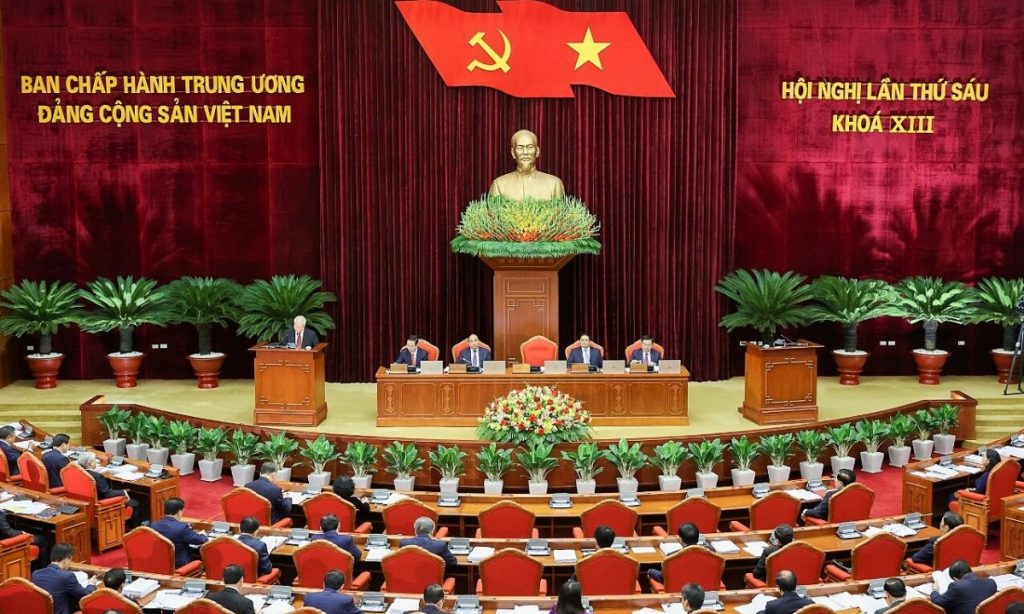
The Communist Party of Vietnam, led by the General Secretary, holds exclusive authority in Vietnamese politics, adhering to the principles of “democratic centralism” espoused by Lenin and not allowing for multi-partyism. The Standing Secretary of the Secretariat oversees the daily operations of the Secretariat.
The President serves as the head of state and possesses various powers. These include announcing the constitution, laws, and ordinances, serving as the Commander-in-Chief of the Armed Forces, proposing the National Assembly to appoint and dismiss key positions such as the Prime Minister, Chief Justice of the Supreme People’s Court, Chief Procurator of the Supreme People’s Procuracy, and representing the State in domestic and foreign affairs.
Is Vietnam a communist country?
The National Assembly, with a term of five years, is led by the President of the National Assembly and is recognized as the highest representative body of the people. It holds constitutional and legislative power and is tasked with supervising and determining fundamental policies and principles of the State apparatus and civil society relations. Although the National Assembly is not independent and adheres to the majority of Party regulations, its role has been elevated following the Doi Moi reforms.
The Government serves as the executive branch of the National Assembly, functioning as the highest administrative body. It comprises the Prime Minister, Deputy Prime Ministers, Ministers, and Heads of ministerial-level agencies.
The key leadership positions in Vietnam, including the General Secretary, State President, Prime Minister, and President of the National Assembly, must be held by members of the Politburo for a full term or as specially determined by the Central Executive Committee or the Politburo.
The Supreme People’s Court serves as the judicial body, while the Military Court holds jurisdiction in matters of national security.
At the apex of the judicial system, the Supreme People’s Procuracy functions as the highest agency responsible for prosecution and overseeing judicial activities in Vietnam.
Military
The Vietnamese People’s Armed Forces consists of the Vietnam People’s Army, the Vietnam People’s Public Security, and the Militia and Self-Defense Forces. The Vietnam People’s Army (VPA) serves as the official military organization in Vietnam and is structured as follows:
- Army Service: The Army Service does not have a separate command but is directly overseen by the General Staff. It encompasses various corps and armed forces under its direction.
- Navy Service: Established in 1955, the Navy Service was formed based on the Coastal Defense Department.
- Air Defense – Air Force: Formed in 2000, the Air Defense – Air Force Service resulted from the merger of the Air Defense and Air Force services.
- Border Guard Force: Established in 1958, the Border Guard Force is responsible for safeguarding Vietnam’s borders.
- Coast Guard: Established in 1998, the Coast Guard focuses on maritime security and protection.
- Cyber Warfare Force: Founded in 2017, the Cyber Warfare Force deals with cyber defense and related activities.
- Guards of Ho Chi Minh Mausoleum: Formed in 1976, the Guards of Ho Chi Minh Mausoleum ensure the security of the mausoleum.
The VPA has an estimated size of around 450,000 personnel, while the total force, including paramilitary and militia, may reach as high as 5,000,000 individuals. In 2010, Vietnam allocated approximately $2.48 billion for military investment, which accounted for roughly 2.5% of the country’s GDP that year.
Diplomatic Update 07/14/2025
As of 2020, Vietnam has established diplomatic relations with 189 countries and holds membership in numerous international organizations, including prominent ones such as the United Nations, the Association of Southeast Asian Nations (ASEAN), the Asia-Pacific Economic Cooperation (APEC), and the World Trade Organization (WTO).
The Socialist Republic of Vietnam, as outlined in the documents of the 10th National Congress of Deputies, follows a foreign policy of independence, self-reliance, openness, diversity, and the multilateralization of international relations. Vietnam actively seeks international integration and emphasizes its willingness to be a friend and reliable partner to all nations striving for peace, independence, and development.
Vietnam became a member of the United Nations in 1977 and subsequently normalized relations with China in 1992 and with the United States in 1995.
It joined ASEAN in 1995. Presently, Vietnam maintains diplomatic relations with 189 countries, including 43 Asian countries, 47 European countries, 14 Oceania countries, 30 American countries, and 55 African countries.[62] Vietnam is also a member of 63 international organizations and has connections with over 650 NGOs.
Within the United Nations, Vietnam holds positions as a member of ECOSOC, the Executive Councils of UNDP, UNFPA, and UPU. Vietnam has hosted notable events such as ASEAN summits (1998, 2010), ASEM (2004), APEC Summit (2006, 2017), Francophone Community (1997), and the 2nd Korea-US Summit (2019).
Vietnam served as a non-permanent member of the United Nations Security Council for the 2008-2009 and 2020-2021 terms and as a member of ECOSOC for the 2016-2018 term.[64] Additionally, Vietnam has assumed the role of ASEAN rotating chair in 2010 and 2020.
Economy Update 07/14/2025
The introduction of the Doi Moi policy in 1986 marked the establishment of a “Socialist-oriented market economy” model in Vietnam. While the economic sectors have expanded, the State still maintains control over key and essential sectors.
Between 1993 and 1997, Vietnam experienced an average annual growth rate of approximately 9%. The GDP growth reached 8.5% in 1997 but slowed down to 4% in 1998 due to the impact of the Asian financial crisis, and then slightly increased to 4.8% in 1999.
However, GDP growth rebounded and rose from 6% to 7% between 2000 and 2002. On November 7, 2006, Vietnam gained entry into the WTO after bilateral negotiations, officially becoming its 150th member on January 11, 2007. Some studies suggest that income inequality has increased following the socio-economic reforms.
In 2013, experts at a conference in Hanoi highlighted that Vietnam’s economy had slowed down after five years of WTO membership.
Specifically, during the period of 2007-2011, Vietnam only achieved GDP growth exceeding 8% in 2008, despite a 2.4-fold increase in exports amounting to $96.9 billion.
Most of the export proportion was attributed to foreign direct investment (FDI) enterprises, accounting for around 60% of exports, primarily agricultural, forestry products, and raw minerals.
Integration also led to an increase in the trade deficit, reaching $18 billion in 2008. By 2013, the economy faced significant pressures from bad debt, inflation, and a sharp increase in public debt due to the impact of the Great Recession.
Corruption levels in Vietnam have consistently been higher than the global average, and issues related to capital, labor training, land planning, administrative reform, and outdated business procedures from two decades ago continue to persist.
According to World Bank statistics in 2015, Vietnam’s PPP per capita in 2014 stood at $5,294.4, which was equivalent to 70% of the Philippines, 55.4% of Indonesia, 37% of Thailand, and 6.5% of Singapore.
In 2020, as announced by the International Monetary Fund (IMF), Vietnam’s economy with a population of 98 million people had a nominal GDP of $340.6 billion, ranking 37th globally, and a purchasing power parity of $1.047 trillion, placing it 23rd globally.
The nominal GDP per capita was $3,498, ranking 115th in the world,[76] and the purchasing power parity per capita was $10,755, ranking 106th globally.
The level of economic freedom in Vietnam remains in the mid-range at 90th place worldwide. In terms of economic geography, the Vietnamese government divides the country into socio-economic and key economic zones within each region. Provinces with the highest GRDP per capita include Ho Chi Minh City (Saigon), Binh Duong, Ba Ria – Vung Tau, Bac Ninh, Hanoi, while provinces with the lowest GRDP per capita include Ha Giang, Lai Chau, Cao Bang, and others.
Traffic Update 07/14/2025
The primary transportation routes within Vietnam consist of roads, railways, and air routes that predominantly run in the north-south direction. The road network comprises national highways, provincial roads, and district roads, totaling approximately 222,000 km in length. Most national and provincial roads are paved and concrete, while some district roads still remain unpaved. Vietnam’s railway system spans 2,652 km, with the North-South railway covering 1,726 km.
Inland waterways predominantly follow an east-west direction, utilizing rivers such as the Da River, Red River, and Saigon River. Future plans for Vietnam’s coastal road envision a route spanning approximately 3,041 km, starting from Nui Do port in Quang Ninh and extending to the Ha Tien border gate in Kien Giang. The maritime route system operates through seaports like Hai Phong, Quy Nhon, and Saigon.
The media
Vietnam has a diverse media landscape comprising four main types: print, audio, video, and electronic media. The country entered the international internet scene in 1997, leading to the emergence of numerous online newspapers and websites in the past decade. As of July 2010, Vietnam boasted 858 print media agencies, including 178 newspapers and 528 magazines. The radio and television sector comprised 65 stations, consisting of two central radio and television stations (VTV, VOV) and 63 local stations. Additionally, there were 34 online newspapers, 180 magazine websites, newspaper websites, radio websites, and thousands of other websites.
In Vietnam, all media and press agencies operate under the management and supervision of the Ministry of Information and Communications, guided by the Central Propaganda Department of the Communist Party of Vietnam. Private press entities are not permitted to operate under the existing laws.
Tourism Update 07/14/2025
The number of tourists to Vietnam increased the fastest in 10 years from 2000–2010. In 2013, there were nearly 7.6 million international visitors to Vietnam and in 2017, there were more than 10 million international visitors to Vietnam, the largest markets being China, Korea, Japan, the United States and the United States, Taiwan.
Vietnam has tourist attractions from North to South, from mountains to plains, from natural landscapes to historical and cultural relics. Mountain tourist destinations such as Sa Pa, Ba Na, Da Lat. Tourist attractions in beaches such as Da Nang, Nha Trang, Vung Tau and islands such as Cat Ba, Con Dao, Ly Son.
Science
In 2010, the total expenditure by the government on science and technology in Vietnam amounted to approximately 0.45% of its GDP.
According to UNESCO, the country allocated 0.19% of its GDP to scientific research and development in 2011. As part of its strategy, Vietnam aims to enhance international scientific collaboration and is in the process of establishing a network of scientists both within the country and abroad, connecting national scientific institutions with foreign partners.
Vietnam has implemented a comprehensive set of national development strategies that primarily focus on economic sectors related to science and technology.
Notable examples include the Sustainable Development Strategy (2012) and the Mechanical Engineering Development Strategy (2006) with Vision 2020 (2006).
These strategies emphasize the importance of skilled human resources and encourage investments in technological advancements, particularly in the private sector.
The Science and Technology Development Strategy 2011–2020, introduced in 2012, outlines key areas for research prioritization, such as mathematics and physics, climate and natural disaster investigations, development of electronic operating systems, and the application of biotechnology in agriculture, forestry, medicine, and environmental conservation.
Population Update 07/14/2025
Vietnam is a country with 54 ethnic groups
As of April 1, 2019, Vietnam’s total population stood at 96,208,984 individuals. Among them, the male population accounted for 47,881,061 people (49.8%), while the female population accounted for 48,327,923 people (50.2%). This positions Vietnam as the 15th most populous country globally. By 2021, the estimated population grew to around 98 million people, and it further increased to an estimated 99.46 million people in 2022.
Vietnam is home to 54 ethnic groups, with the Kinh people representing the majority, comprising nearly 86% of the population. They are primarily concentrated in the deltas and coastal plains. Ethnic minorities, except the Chinese, Cham, and Khmer communities, are predominantly situated in mountainous and highland regions. Notable minority groups include the Tay, Thai, Muong, and O Du, with the latter being the smallest in terms of population. Over the past few centuries, some ethnic groups, such as the Chinese, have migrated to Vietnam. However, it is worth noting that the Hoa and Ngai ethnic groups experienced a decline in population between 1999 and 2009.
The Red River Delta is the most populous region in Vietnam, housing approximately 22.5 million people, followed by the North Central Coast and the South Central Coast with around 20.1 million people each. The Southeast region is home to about 17.8 million individuals, while the Mekong River Delta region has around 17.2 million inhabitants. The Central Highlands region has the lowest population, with roughly 5.8 million people residing there. According to the 2019 Census of Population and Housing, 34.4% of Vietnam’s population lives in urban areas, while 65.6% resides in rural areas. In 2019, the average sex ratio was 99.1 males per 100 females.
The Economist reports that Vietnam is experiencing a declining birth rate, resulting in an aging population. The proportion of individuals aged 60 or above is projected to increase from 12% in 2018 to 21% by 2040. Vietnam’s working-age population peaked in 2013 and is expected to decline. This demographic shift poses financial challenges in terms of providing healthcare and support services, especially since 90% of seniors have no savings, and the state budget only provides modest subsidies to individuals over 80 years old, amounting to a few USD per week.
Language
The official language of Vietnam is Vietnamese, which is a tonal language belonging to the Austroasiatic language family and serves as the mother tongue of the Vietnamese people.
The country’s constitution does not specify a national script or an official script. In the pre-20th century period, literature written in Sino-Vietnamese characters was used in administrative documents.
The Nom script, which emerged between the 7th and 13th centuries, was developed using Chinese characters to represent pure Vietnamese language elements.
This script coexisted with Chinese characters to form a common writing system for Vietnamese until the French colonial era. Medieval Vietnamese works were written in both Chinese characters and Nom script, such as Nguyen Trai’s Binh Ngo Dai Cao in Chinese characters and Nguyen Du’s Truyen Kieu in Nom script.
Quoc Ngu, a Latin-based script, was developed in the 17th century by Jesuit missionaries like Francisco de Pina and Alexandre de Rhodes.
It was based on the Portuguese alphabet and later spread through colonial regulations alongside the influence of the French during the French colonial period. Vietnam is home to various ethnic minority groups who speak different languages, including Tay, Nung, Muong, H’Mong, Cham, and Khmer.
Language families present in Vietnam include Austroasiatic, Kra-Dai, Sino-Tibetan, Hmong-Mien, and Austronesian. Additionally, sign languages have been established in major Vietnamese cities.
While Vietnam is a member of the Francophonie, the prominence of French as the official language during the colonial regime has diminished rapidly.
English has emerged as the primary foreign language, driven by changing relationships with Western countries and reforms in economic and educational governance.
English learning has become compulsory in most schools, either alongside or as an alternative to French. Russian and German are taught in a few upper secondary schools, while Japanese, Chinese, and Korean have gained popularity due to Vietnam’s strengthened relations with East Asian countries.
Religion
Vietnam is a diverse country with a multitude of religions and belief systems. While the majority of Vietnamese people do not associate themselves with any organized religion, many still follow folk beliefs.
The cultural landscape of Vietnam has been significantly shaped by the introduction of Buddhism, along with Confucianism and Taoism, collectively known as the three religions.
Mahayana Buddhism holds a prominent position among Vietnamese Buddhists and was once the state religion during the Ly and Tran dynasties. Confucianism also attained a distinct influence during the rule of the Le and Nguyen dynasties, with certain Confucian ideas playing a role in Vietnam’s social order.
Catholicism was introduced to Vietnam in the 16th century and gained a firm foundation in the 17th century through the efforts of Portuguese and Italian Jesuit missionaries.
Protestantism, on the other hand, began its evangelization in Vietnam in the early 20th century through the United Evangelical Missionary Association. Hinduism and later Islam found their way to Champa, leaving traces of their influence.
In addition to these world religions, Vietnam is also home to several indigenous belief systems such as Cao Dai and Hoa Hao. These endogenous religions contribute to the rich tapestry of religious diversity in Vietnam.
Education
The allocation of the state budget for education in Vietnam has shown an upward trend, increasing from 10.89% in 2005 to 12.05% in 2010 and further to 16.85% in 2012.
In Vietnam, the education system consists of five levels: primary school, junior high school, high school, university, and graduate school. Universities are primarily concentrated in Hanoi and Ho Chi Minh City.
According to the 2013 publication of the Programme for International Student Assessment (PISA) by the Organisation for Economic Co-operation and Development (OECD), Vietnamese students aged 15 achieved an impressive 8th place in the world in terms of their average score in Science subjects in 2012.
However, there are opinions suggesting that this result may not accurately reflect the overall quality of education in Vietnam, as high schools, under the guidance of the Ministry of Education and Training, had prepared extensively for the PISA exam in advance.
At the undergraduate level, Vietnam boasts a total of 376 colleges and universities across the country, with 54 directly managed by the Ministry of Education.
The three largest university campuses in Vietnam are Vietnam National University, Hanoi; Vietnam National University, Ho Chi Minh City; and Hanoi University of Science and Technology.
In 1988, the Ministry of Universities issued a decision allowing the establishment of Thang Long Private University Center, which became the first private university in Vietnam. As of 2017, there were 84 privately founded and private schools in the country.The total number of undergraduate students as of the 2016-2017 academic year reached 1,767,879 individuals.
Medical Update 07/14/2025
In terms of infrastructure, as of 2010, Vietnam had a total of 1,030 hospitals, 44 rehabilitation sanatoriums, and 622 regional polyclinics, providing approximately 246,300 beds.
In addition to state-owned medical facilities, a private health system has begun to emerge, including 19,895 medical practice establishments, 14,048 pharmacy practice establishments, 7,015 traditional medicine practice establishments, and five hospitals.
Foreign investment has played a role in alleviating overcrowding in state hospitals. Vietnam’s grassroots health network covers 80% of villages with operating health workers, and 100% of communes have health stations, with nearly two-thirds of them meeting national standards.
As for human resources in the industry, Vietnam has a system of medical and pharmaceutical universities spread across the country.
Every year, thousands of doctors and pharmacists graduate from these universities. Moreover, there is a network of schools that train technicians in medicine, pharmacy, and dentistry at the high school level in different localities. The number of health workers has reached 250,000, with 47,000 holding various university degrees.
Several international organizations providing Official Development Assistance (ODA) and numerous Non-Governmental Organizations (NGOs) have supported Vietnam’s health sector.
As of 2010, the Ministry of Health of Vietnam was overseeing 62 ODA projects and over 100 NGO projects, with a total budget exceeding one billion USD. These projects are implemented across different regions of the country. The health sector in Vietnam faces challenges related to corruption, which can be found in government administration, healthcare services, and health insurance administration.
According to statistics from 2016, the average life expectancy of Vietnamese people is 75.6 years, ranking second in Southeast Asia, just behind Singapore.
Culture Update 07/14/2025
Vietnam boasts a rich and diverse culture, encompassing various regional traditions. From the agricultural customs and wet rice civilization of the Red River Delta and Thanh-Nghe region to the unique cultural nuances observed by ethnic minorities in the Northwest and Northeast, and the vibrant Champa culture of the Cham people in the South Central region, the Central Highlands tribes, and the amalgamation of cultures in the new Southern region influenced by the Chinese and Khmer ethnic groups.
In terms of traditions, Vietnamese mainstream culture is considered part of the East Asian cultural region, alongside China, Korea, and Japan.
With a history spanning thousands of years, Vietnam has undergone cultural transformations shaped by indigenous customs during the Hong Bang period, the influences of China and Southeast Asia, the impact of French colonization in the 19th century, Western influences in the 20th century, and the forces of globalization in the 21st century.
These historical periods have brought about significant cultural changes in Vietnam. The country is home to 54 ethnic groups, each with its own customs and festivals that reflect community activities, religious beliefs, linguistic richness, and artistic expressions.
These customs and festivals exhibit a sense of communal unity, religious tolerance, and an appreciation for the depth of metaphor found in literature and art.
Music
Vietnam showcases a diverse range of traditional music across its regions. Classical music in the northern part of the country holds the distinction of being the oldest form of Vietnamese music. Throughout history, Vietnamese music has been influenced by various musical traditions, including those of China, Korea, Mongolia, and Japan. Nha Nhac, known as royal music, stands as a prominent form of classical music.
Ca Tru, a poetic musical performance, captivates with its rich lyrical content. Ancient musical theater forms like Cheo, Tuong, and Cai Luong have their own distinct styles.
Xam represents a type of folk music, while Quan Ho finds its roots in Bac Ninh and Bac Giang. Chau Van, on the other hand, encompasses the music of Hau Dong ceremonies. Adapted folk music emerged in the 1950s and has become a significant part of Vietnamese folk music.
UNESCO recognizes several traditional music genres as intangible cultural heritages, including Hue Nha Music, Ca Tru, Quan Ho, Xoan Singing, Southern Don Ca Tai Tu, and Nghe Tinh Vi Giam.
Other notable examples of intangible cultural heritages include Bai Choi, gong music in the Central Highlands, and then singing. Traditional Vietnamese musical instruments encompass a wide range, such as the dan bau, zither, lute, flute, drums, and percussion instruments.
In the 20th century, new genres of Vietnamese music emerged. During the Vietnam War, the North (Democratic Republic of Vietnam) popularized red music, while yellow music developed in the South (Republic of Vietnam).
In contemporary times, V-pop, a modern Vietnamese music genre, has gained immense popularity in the media. Notable V-pop singers include Dam Vinh Hung, Dong Nhi, Son Tung M-TP, Min, My Tam, as well as revered divas like Thanh Lam, Hong Nhung, Tran Thu Ha, and My Linh.
Skin
Ao Dai is a cherished and widely recognized traditional attire in Vietnam, primarily donned by women during special occasions like weddings and festivals.
In certain high schools in Vietnam, the white ao dai serves as a mandatory uniform for female students during flag-raising ceremonies.
Beyond the ao dai, Vietnam boasts a variety of other traditional costumes, including the Giao Linh shirt, the four-body shirt, the cereal shirt, the bib, the ba ba shirt, the brocade shirt, the Nhat Binh shirt, and more.
As for headwear, conical hats and strap hats are commonly seen, serving practical and aesthetic purposes. These costumes also extend to the realm of sports. Furthermore, ethnic minority groups in Vietnam have their own distinctive attire, showcasing the rich diversity of traditional clothing in the country.
Cuisine
Vietnamese cuisine is characterized by a harmonious blend of five fundamental flavors: spicy, sour, bitter, salty, and sweet. Key ingredients like fish sauce and soy sauce are used to enhance the flavors of dishes.
The cooking style in Vietnamese cuisine often revolves around fresh ingredients, minimal use of oil, and a strong emphasis on herbs and vegetables.
What sets Vietnamese cuisine apart from others is its focus on delectable flavors, sometimes prioritizing taste over sheer nutritional value. As a result, you may find fewer elaborate dishes that require extensive stewing or simmering, similar to Chinese cuisine, and less emphasis on highly aesthetic presentation, as seen in Japanese cuisine. Instead, Vietnamese cuisine excels in the art of blending spices and utilizing robust, crunchy ingredients such as chicken wings, offal, duck eggs, and more.
See more: 5 specialties in Sa Dec
Sport
Vietnam boasts a range of traditional sports that are deeply ingrained in its culture, including wrestling, martial arts, shuttlecock kicking, and chess. In certain regions with a concentration of ethnic minorities, activities like crossbow shooting and stick pushing are also practiced.
Alongside these traditional sports, modern sports have gained popularity, such as football, table tennis, basketball, volleyball, badminton, billiards, and chess. Football, in particular, holds a special place in the hearts of Vietnamese people and enjoys a widespread following.
Regarding international sporting events, Vietnam and the Republic of Vietnam participated in the Summer Olympics from 1952 to 1972, but unfortunately did not secure any medals, while the Democratic Republic of Vietnam did not take part. Following the reunification in 1975, the Socialist Republic of Vietnam began its Olympic journey in 1980.
The country achieved its first silver medal in 2000, won by Taekwondo fighter Tran Hieu Ngan, and clinched its first gold medal in 2016 through Hoang Xuan Vinh’s exceptional performance in shooting.
In the Paralympic Games, Vietnam has been participating since 2000 and celebrated its inaugural gold medal in 2016, courtesy of weightlifter Le Van Cong’s outstanding achievement. It’s worth noting that due to Vietnam’s tropical climate, the country has not developed winter sports like ice skating and has never participated in the Winter Olympics.

